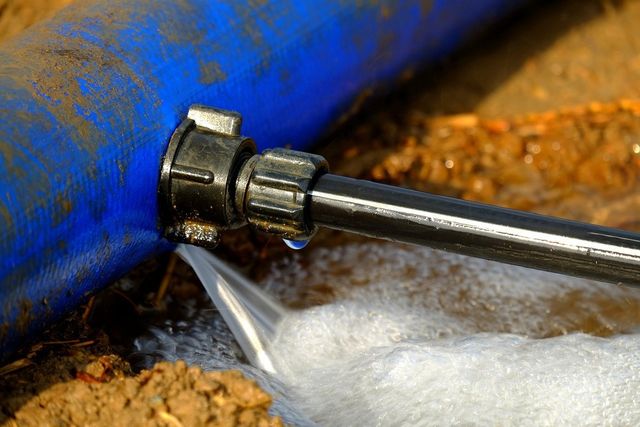Exactly how to Locate and Repair Service Water Leaks-- A Comprehensive Overview
Exactly how to Locate and Repair Service Water Leaks-- A Comprehensive Overview
Blog Article
We've uncovered this post relating to Finding hidden leaks down the page on the internet and thought it made perfect sense to discuss it with you in this article.

Early discovery of leaking water lines can mitigate a potential disaster. Some tiny water leaks may not be noticeable.
1. Examine the Water Meter
Examining it is a guaranteed way that helps you uncover leakages. If it moves, that suggests a fast-moving leakage. This indicates you may have a slow leakage that could even be underground.
2. Inspect Water Usage
Evaluate your water costs and track your water usage. As the one paying it, you ought to observe if there are any disparities. If you detect sudden changes, in spite of your intake being the same, it implies that you have leaks in your plumbing system. Remember, your water bill need to fall under the same array each month. An unexpected spike in your bill suggests a fast-moving leakage.
At the same time, a consistent boost every month, despite the very same practices, shows you have a slow-moving leak that's likewise slowly rising. Call a plumber to extensively check your building, specifically if you feel a cozy location on your floor with piping beneath.
3. Do a Food Coloring Examination
30% comes from commodes when it comes to water intake. Test to see if they are running appropriately. Drop specks of food color in the storage tank and wait 10 minutes. There's a leakage in between the container as well as bowl if the shade in some way infiltrates your dish during that time without flushing.
4. Asses Outside Lines
Don't neglect to inspect your outside water lines as well. Should water leak out of the connection, you have a loose rubber gasket. One tiny leak can waste lots of water and also spike your water expense.
5. Examine and also Evaluate the Circumstance
Home owners must make it a habit to check under the sink counters and also also inside cabinets for any kind of bad odor or mold growth. These 2 red flags suggest a leak so timely attention is required. Doing routine examinations, also bi-annually, can save you from a major issue.
If you recognize your home is already old, keep a watchful eye on your heating units, tubes, pipes etc. Check for discolorations as well as weakening as most appliances and also pipelines have a life expectancy. They will additionally normally wear away because of wear and tear. Do not wait for it to escalate if you suspect leaking water lines in your plumbing system. Call an expert plumber right away so you don't wind up with a terrible mess in your home.
Early discovery of dripping water lines can mitigate a prospective catastrophe. Some little water leaks may not be noticeable. Inspecting it is a guaranteed means that assists you find leakages. One small leakage can lose tons of water as well as surge your water bill.
If you think dripping water lines in your plumbing system, don't wait for it to rise.
WARNING SIGNS OF WATER LEAKAGE BEHIND THE WALL
PERSISTENT MUSTY ODORS
As water slowly drips from a leaky pipe inside the wall, flooring and sheetrock stay damp and develop an odor similar to wet cardboard. It generates a musty smell that can help you find hidden leaks.
MOLD IN UNUSUAL AREAS
Mold usually grows in wet areas like kitchens, baths and laundry rooms. If you spot the stuff on walls or baseboards in other rooms of the house, it’s a good indicator of undetected water leaks.
STAINS THAT GROW
When mold thrives around a leaky pipe, it sometimes takes hold on the inside surface of the affected wall. A growing stain on otherwise clean sheetrock is often your sign of a hidden plumbing problem.
PEELING OR BUBBLING WALLPAPER / PAINT
This clue is easy to miss in rooms that don’t get much use. When you see wallpaper separating along seams or paint bubbling or flaking off the wall, blame sheetrock that stays wet because of an undetected leak.
BUCKLED CEILINGS AND STAINED FLOORS
If ceilings or floors in bathrooms, kitchens or laundry areas develop structural problems, don’t rule out constant damp inside the walls. Wet sheetrock can affect adjacent framing, flooring and ceilings.
https://www.servicemasterbyzaba.com/blog/how-to-detect-water-leakage-in-walls/

As an avid person who reads on Detecting hidden plumbing leaks, I imagined sharing that article post was worthwhile. If you please set aside a second to share this article if you appreciated it. Thanks a lot for your time. Kindly check up our site back soon.
Report this page